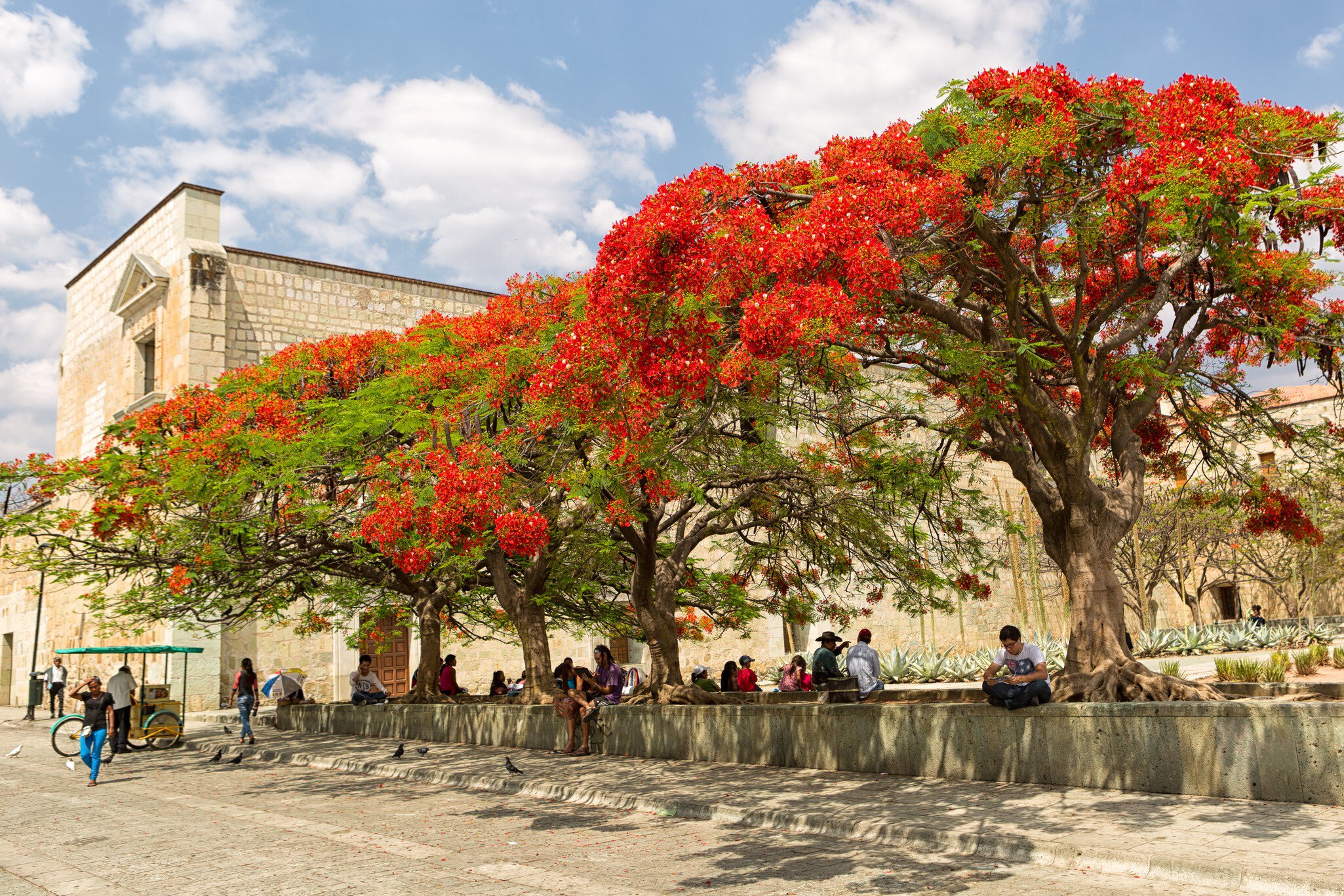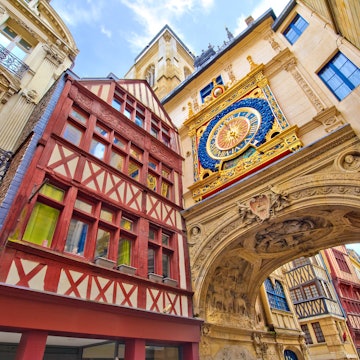

People enjoy the water on a pier at Ribersborgsstranden, Malmö, Sweden. olrat/Shutterstock
Exciting things are happening in Malmö, Sweden. Over the past two decades, the establishment of Malmö University and the construction of the Öresund Bridge have totally reinvigorated Sweden’s fastest-growing metropolis, linking it with Copenhagen and, by extension, the rest of Europe.
Building on its fishing and shipbuilding history, Malmö is now home to thriving biotech, IT and design sectors. And many other businesses – IKEA among them – are moving their headquarters here, lured by the city’s mild weather, youthful and diverse population, focus on innovation and top-notch transport links.
All of this makes Malmö one of the best places to visit on any trip to Sweden. Respect for the city’s rich architectural heritage goes hand-in-hand with socially progressive and sustainable urban planning, so exploring the city center and surrounding neighborhoods is highly rewarding.
Equally rich are the local cultural and food scenes, which are among the most impressive in Sweden – reflecting the fact that the local population is drawn from almost every nationality on earth. Here is our pick of the best things to do in Malmö, Sweden.

1. Explore Malmö’s medieval core
Locals refer to the centre of Malmö as Gamla Staden (“Old Town”), flocking to its cobbled streets to socialize and shop. Incorporating three historic market squares – Stortorget (Big Square), Lilla Torget (Little Square) and large Gustav Adolfs Torg (named for Gustav IV Adolf, King of Sweden from 1792 to 1809). The area’s attractive buildings, compact nature and lack of car traffic make it a delightful pocket to explore on foot or by bicycle.
When wandering the streets, you’ll see many charming half-timbered houses, the dominant building style in Sweden in the Middle Ages. The oldest half-timbered house in the city is Thottska Huset (1558) on the corner of Östergatan and Humlegatan.
Other notable examples include the buildings in St Gertrud Quarter, a courtyard complex at Östergatan 7B. Threatened with demolition in the 1960s, the three historic manor houses here were given a reprieve when Malmö’s local government bought them up and renovated them. The quarter now houses a restaurant, bakery, wine bar and boutiques. Other fairy-tale half-timbered buildings can be found in nearby streets.
Visitors to Malmö invariably comment on the number of handsome 15th- and 16th-century brick buildings in Gamla Staden and wonder how they came to be built. The answer lies in the history of the Hanseatic League, a medieval maritime confederation of merchant guilds, market towns and city states in central and northern Europe.
Membership of the league brought with it tax-free agreements, cooperative security arrangements, diplomatic networks and other privileges. As a major player in Europe’s herring trade, Malmö was welcomed into the league as a kontore (foreign trading post), starting in the 15th century. Its merchants grew rich as a result, building grand homes and warehouses to demonstrate their mercantile success – leaving a legacy of preserved buildings that impresses visitors to this day.
Local tip: Dating from 1590, wonderfully pretty Lilla Torget is the epicenter of Malmö’s eating and drinking scene, with plenty of outdoor seating in the bars and bistros surrounding the square and in the narrow streets leading towards Kungsparken (King’s Park).

2. Compare and contrast Malmö’s grand churches
In the Middle Ages, the profits from Malmö’s lucrative herring trade funded the construction of the Gothic-style St Petri Kyrka (St Peter’s Church), among other major building projects. The church was inaugurated at the beginning of the 14th century, and the huge carved-oak altarpiece, which dates from the early 17th century, was restored in the first decade of the 20th century.
By contrast, the Evangelical Lutheran St Johannes Kyrka (St John’s Church), which opened in 1907, is a magnificent showcase of art nouveau architecture and design, its interior decorated with gorgeous stained glass and murals in pastel colors.
Insider tip: Don’t miss the medieval murals in St Petri’s Krämarkapellet, (Merchants Chapel), dating from the 15th century.
3. Look at art in a former power station at Moderna Museet Malmö
Malmö is home to several gallery spaces that focus on cutting-edge contemporary art, but the most impressive is undoubtedly the Moderna Museet Malmö. Occupying a handsome art nouveau power station from 1901, this purpose-designed gallery has a contemporary annex that sits within the original turbine shell. Expect to see plenty of contemporary works and installations, as well as paintings by familiar masters such as Picasso and Dalí.
Detour: Another terrific venue for home-grown talent is the Malmö Konsthall, with its shed-like exhibition space, located near Triangeln Train Station.

4. Have a soak at Malmö’s most popular beach
When the sun comes out, so too do Malmöites. And in summer, most locals can be found in one spot: Ribersborgsstranden. This long stretch of beach is used by surfers, windsurfers and kitesurfers, alongside families enjoying the sand.
The heritage-listed Ribersborgs Kallbadhus, a vintage cold-water bathhouse that has been a Malmö institution since 1898, sits at the end of one of the beach piers. Open year-round, the bathhouse has two large outdoor ocean pools (one for males and the other for females), saunas (one mixed and four single-sex), wood-fired hot tubs, on-site masseurs, and a cafe.
In winter, brave souls go ice bathing before warming up in the saunas. And on the first Monday of every month, the bathhouse hosts Queer Kallis, when each pool is open to all genders and identities.
Planning tip: Note that everyone goes nude in the pools and saunas of Ribersborgs Kallbadhus, so come prepared to bare all.
5. Have a meal at a collectively owned restaurant
The owners of Kollektivkrogen describe their restaurant as “our living room away from home” – and are particularly proud of its unusual business model. The restaurant was conceived as a collective enterprise, funded by a group of 50 locals, each of whom invested 35,000kr (US$3600) and committed to working two shifts per month at the restaurant.
It has been a huge success since opening in 2022, helped by the fact that its chef, Fredrik Madsen, and manager, Baltazar Riesbeck, are both industry veterans. Brought together by a love of food and a shared dream of working in the hospitality industry, the owners come from many professions and make the most of their shifts on the floor of the restaurant, in the kitchen or behind the bar.
Service is friendly, the food is among the best in the city and the wine list is excellent, making this dining experience as satisfying as it is innovative. So what sort of food can you expect? As you can imagine, it defies easy categorization, with innovative riffs on seasonal traditional dishes and a focus on local ingredients, all paired with carefully chosen wines.
Planning tip: If you want to compare your meal at Kollektivkrogen with a more conventional restaurant experience, we recommend Johan P, a longstanding Mälmo institution known for its fresh-off-the-boat seafood.

6. Take a tour of cutting-edge architecture
Malmö is an open-air showcase for some of Sweden’s most memorable modern architecture. The city’s most recognizable building is known as the Turning Torso (2005). Designed by Spanish architect and engineer Santiago Calatrava, this twisting mixed-use residential tower in the Västra Hamnen (Western Harbor) district was originally conceived as a free-standing sculpture.
More recent notable buildings include the aluminum-and-glass World Maritime University from 2015, overlooking the canal near Centralstation. Designed by Danish firms Terroir and Kim Utzon Arkitekter, this is a sculptural extension to a harbor master’s building from 1910. Nearby, the Malmö Saluhall (Malmö Food Hall), created by local firm Wingårdhs in 2014, is another notable example of adaptive reuse.
Near Gamla Staden, the 2013-built Slussplan – a mixed-use project designed by Malmö firm White Arkitekter – is a thoughtful exercise in regenerative architecture, while Nord Architects’ low-slung 2018 Marint Kunskapscenter i Malmö (Marine Education Center) facing Ribersborgs beach has been widely acclaimed for its innovative design.
Detour: Straddling the strait between Denmark and Sweden, the 5-mile-long (8km) Öresundsbron is Europe’s longest road and rail bridge – and perhaps the most visually striking bridge in Scandinavia.

7. Unleash your inner Viking in at the Fotevikens Museum
Historical documents suggest that during the Viking era, the Falsterbo peninsula was the site of a prosperous fishing village that hosted one of the largest summer markets in Scandinavia. Inspired by this heritage, the Scandinavian Viking Explorer Group has recreated a late–Viking Age village in Höllviken, 15.5 miles (25km) south of Mälmo.
Opened in 1995, the ever-popular Fotevikens Museum includes reconstructions of original Viking-era huts, from the homes of the village chieftain and the town’s jarl (commander of the armed forces), to the simpler homes of fishers and artisans. Other attractions include a lethally powerful war catapult, a shield-lined great hall (the Thinghöll) and a recreation of the 36ft-long (11m) Eric Emune, one of four wooden Viking ships discovered in the mouth of the Bay of Foteviken in the 1980s.
The museum opens for Easter, and then from May until the start of September. But the best time to visit is in the week after Midsummer Eve, when it hosts Viking Week, an extravaganza featuring handicraft workshops, battle reenactments and Viking games such as tug-of-war, fish-tossing, axe-throwing and archery. Book ahead online.
Planning tip: Höllviken and the Fotevikens Museum are 30 minutes by car from central Malmö. If you prefer to come by public transport, the number 15 Skanetrafiken bus takes about an hour from Gamla Staden.
This article was adapted from Lonely Planet’s Scandinavia guidebook, published in July 2025.












